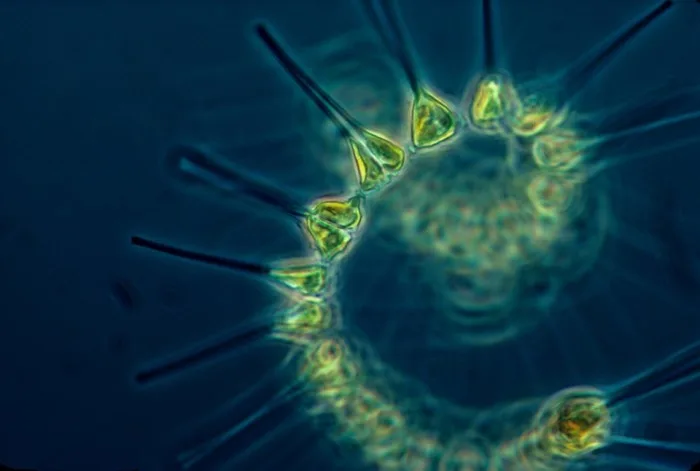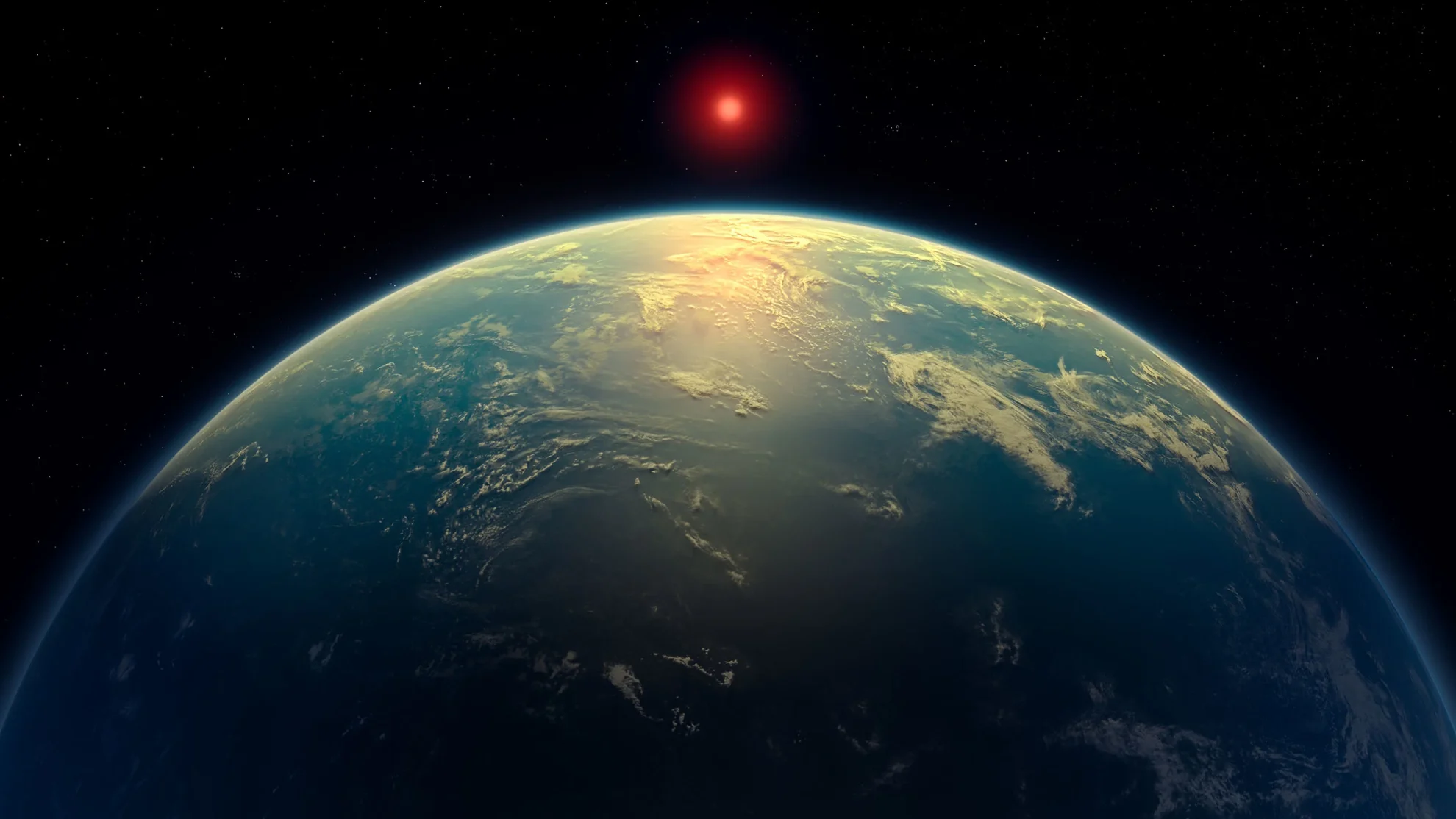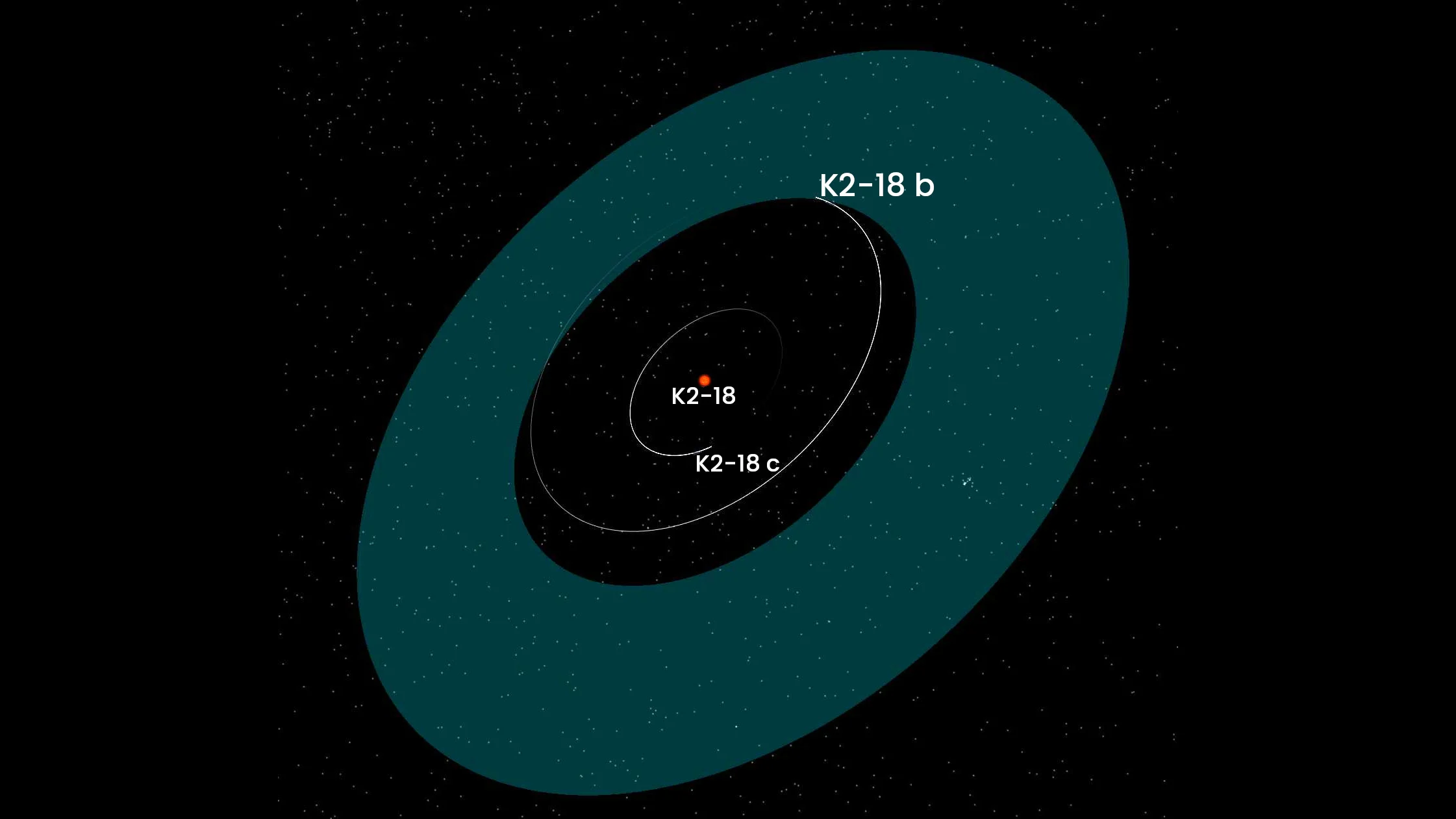
Strongest signs of alien life so far found on massive watery planet
An immense water world, right in our cosmic backyard, could be teeming with alien life.
Using the James Webb Space Telescope, a team of astronomers has found a pair of gases in a distant alien world's atmosphere that can only be explained, currently, by the presence of biological life.
A little over 120 light years away from Earth, in the constellation Leo, is a small red dwarf star called K2-18. Orbiting around that star is an immense planet, a 'super-Earth' over two and a half times the size of our homeworld and more than eight times its mass, which was first spotted by the Kepler Space Telescope in 2015. Since its discovery, K2-18 b, as it is known, has been of particular interest to astronomers because it circles its star in the so-called 'habitable zone', where temperatures would be just right for liquid water to exist on its surface.

An artist's impression of K2-18 b as a water world with wispy clouds, orbiting its small red dwarf parent star. A second planet in the system, K2-18 c, can also be seen. (NASA/Hubble)
MORE ABOUT THIS DISCOVERY: Signs of alien life on K2-18b? Here's why many scientists are skeptical
Follow-up observations have revealed that K2-18 b could be a Hycean world — a planet entirely covered by ocean, with a hydrogen-rich atmosphere. Astronomers have also found water vapour, methane, and carbon dioxide in its atmosphere already. This has made it an even more tantalizing target for investigation, as we know from our experiences here on Earth that those gases, while potentially having a geological origin, can also be associated with life.
Along with those previous discoveries, there were also hints of two other atmospheric components — dimethyl sulfide (DMS) and dimethyl disulfide (DMDS) — that are much more closely tied to biological life. The latest study of K2-18 b, using the James Webb Space Telescope, has now confirmed the presence of these two gases, providing even stronger evidence that it could be an ocean world teeming with alien lifeforms.

This graph shows the spectrum of starlight passing through the atmosphere of exoplanet K2-18 b, as measured by the JWST MIRI spectrograph. The yellow dots represent the data collected from K2-18 b, with the lines extended from each dot being the possible error range of the measurements. The blue curve is the idealized spectra of the gases dimethyl sulfide and dimethyl disulfide, either combined (at the left) and separately, (at the right). (A. Smith, N. Madhusudhan)
DON'T MISS: Get to know the hidden gems across Canada
Dimethyl sulfide and dimethyl disulfide are two gases that, here on Earth, occur naturally due to the presence of biological life. We currently know of no other natural processes that would produce either of them.
We find DMS and DMDS in Earth's atmosphere as trace gases, with concentrations of about 1 part per billion. Recent observations of K2-18 b with Webb have revealed both are a thousand times more abundant in that planet's atmosphere.

The approximate location of K2-18 in the night sky, in the constellation Leo. (Stellarium/Scott Sutherland)
"Earlier theoretical work had predicted that high levels of sulfur-based gases like DMS and DMDS are possible on Hycean worlds," stated Professor Nikku Madhusudhan, the lead researcher in this new study from Cambridge University's Institute of Astronomy. "And now we’ve observed it, in line with what was predicted."
"Given everything we know about this planet, a Hycean world with an ocean that is teeming with life is the scenario that best fits the data we have," Madhusudhan explained.
What are DMS and DMDS?
If you've ever cooked corn, cabbage, asparagus, or seafood, you've likely encountered dimethyl sulfide (DMS), as it's part of the smell given off by these foods as they are heated. Spending time in the kitchen is a good way to come into contact with dimethyl disulfide (DMDS) as well, as it's a common food additive.

A common type of phytoplankton, found in the New York Bight area. (NOAA)
MORE SCIENCE: Brand new satellite begins watching over Canada into the 2030s
In nature, both are abundant. Dimethyl sulfide is most commonly associated with ocean phytoplankton, as the tiny creatures release this gas during photosynthesis. Although dimethyl disulfide is made by industrial processes, its presence in nature is mostly due to a range of different organisms — bacteria, marine algae, fungi, plants, and even animals.
Given their origins, this is why both DMS and DMDS are considered to be 'biosignature molecules', and detecting these gases in the atmosphere of a distant exoplanet is a fairly good indication that there could be life there.
"The inference of these biosignature molecules poses profound questions concerning the processes that might be producing them," co-author Subhajit Sarkar, from Cardiff University, said in the press release.
How sure are they that this is aliens?
While they are excited about this discovery, the researchers are still very cautious about exactly what they have found.
"It's important that we're deeply sceptical of our own results, because it's only by testing and testing again that we will be able to reach the point where we're confident in them," Madhusudhan said. "That's how science has to work."

Another artist's impression of exoplanet K2-18 b and its red dwarf star. (A. Smith/N. Mandhusudhan)
SEE ALSO: All-female crew launches into space on Blue Origin rocket
Although dimethyl sulfide and dimethyl disulfide are only produced, naturally, by biological life here on Earth, there may be some mechanism we've never seen before that could produce it elsewhere.
Perhaps there is something about K2-18 b's environment — with its atmosphere being very different compared to Earth's, and its much closer orbit around its star — that could provide an explanation in the future.
"Our work is the starting point for all the investigations that are now needed to confirm and understand the implications of these exciting findings," said Savvas Constantinou, a co-author of the study and colleague of Madhusudhan's at Cambridge’s Institute of Astronomy.

The known K2-18 planetary system, with K2-18 b on an elliptical orbit that has it swinging in and out of the star's habitable zone (green ring) roughly every 33 days. (NASA)
"Decades from now, we may look back at this point in time and recognise it was when the living universe came within reach," Madhusudhan concluded. "This could be the tipping point, where suddenly the fundamental question of whether we're alone in the universe is one we're capable of answering."
With their observations so far, the researchers are 99.7 per cent confident that what they're seeing is real. This is known as 3-sigma statistical significance, which gives only a 0.3 per cent probability that their results occurred by random chance (false readings, problems with the telescope, errors in the data, etc).
They say gathering between 18 and 24 hours of further data from K2-18 b with JWST will help them reach the goal of 5-sigma significance, with just a 0.00006 per cent probability for the results to be just due to chance, which is the threshold for a bonafide scientific discovery.
